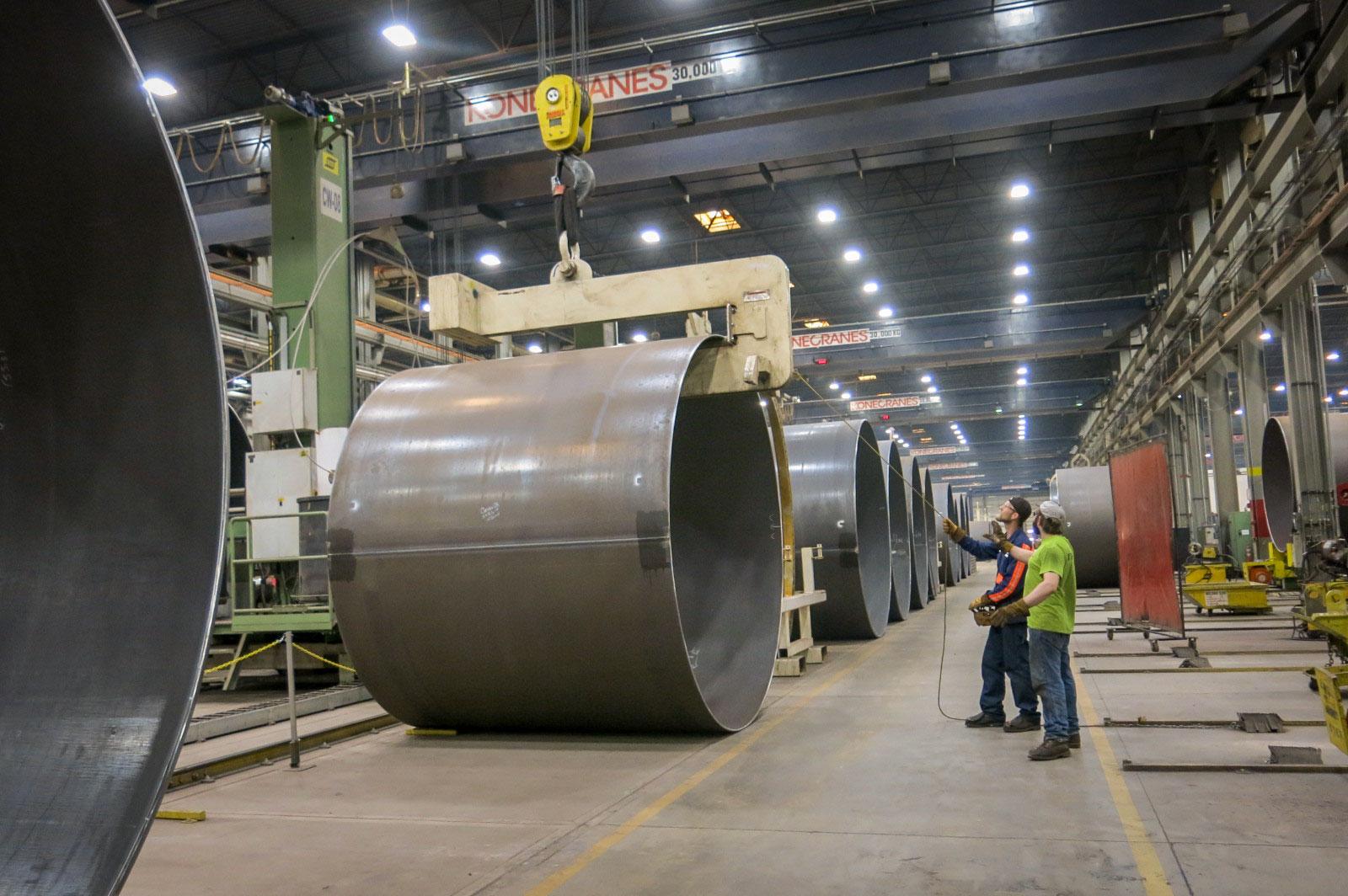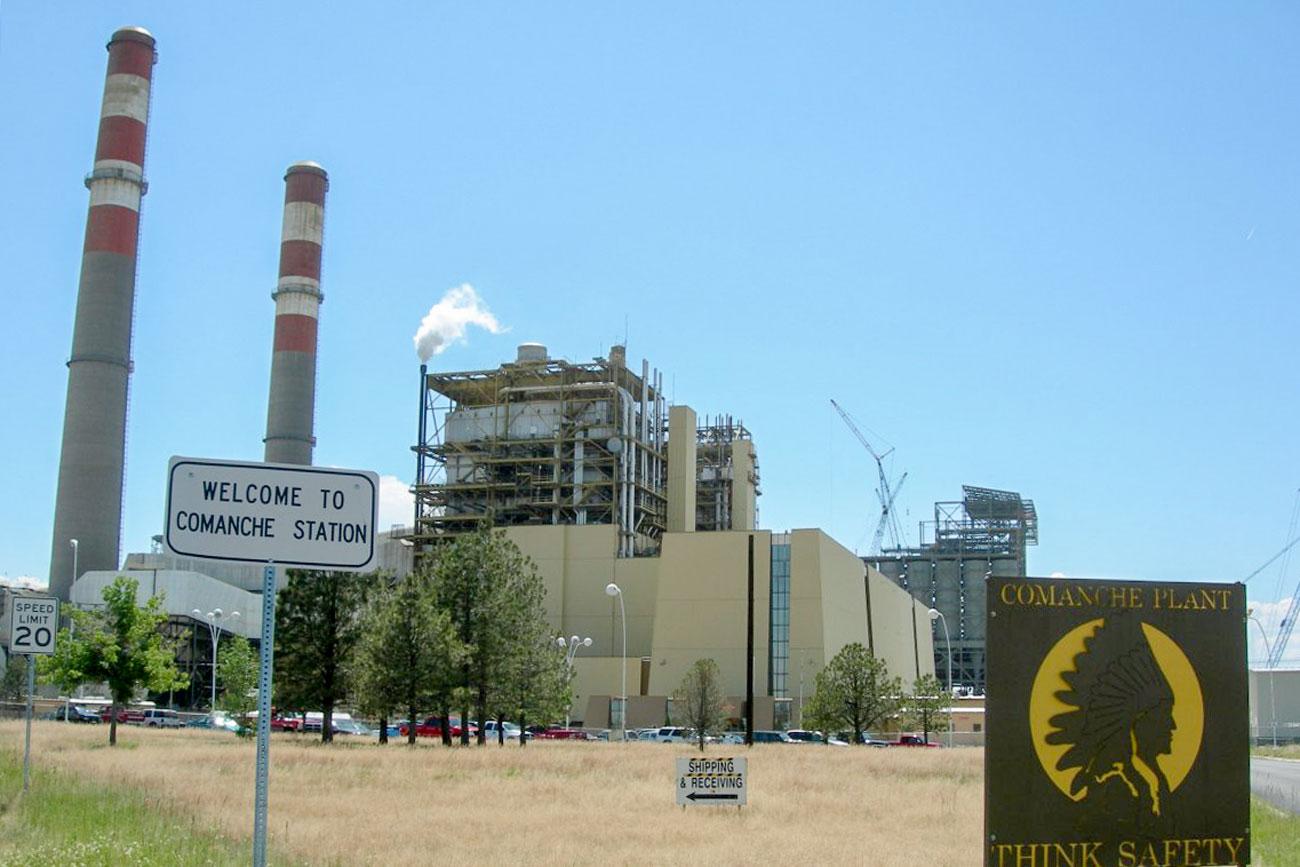

A very public debate is brewing over the balance of coal and renewable energy in Pueblo. Residents here are at the crossroads of decisions by the state’s two largest utilities: Xcel Energy and Black Hills Energy.
Xcel has big plans for the steel city. Their goal is to reduce coal-fired power and boost wind and solar production to 55 percent of the company’s energy mix.
If Colorado regulators approve, it would mean two out of the three smokestacks that define Pueblo’s skyline would go away. The proposed change makes Comanche Power Plant workers like Dave McKenzie nervous. He’s been at Xcel’s largest coal-fired power plant in the state for 15 years.
“We’re very well paid for what we do. But we work in a dangerous situation,” said the third generation Puebloan.
Here’s the rub: Comanche employees can earn up to $100,000 a year. That’s a big deal in a town where the average salary is about $20,000 less compared to the rest of the state.
There are 80 jobs on the line and by 2025, workers will either retire or be placed in new positions, according to the utility. But for McKenzie and his two son-in-laws — who also work at the plant — there are more questions than answers.

“I don’t want to see my grandkids have to leave. It’s fun having them run around the house. But if these jobs go away. So do they,” McKenzie posited.
Regulators are expected to give their final decision on the Xcel Energy renewable energy plan and the future of Pueblo’s Comanche plant in September. Transitioning coal jobs isn’t unique to Pueblo. It’s happening nationwide as more utilities turn to renewables despite President Donald Trump’s effort to bolster the industry. In Colorado, the Xcel plan is buoyed by Gov. John Hickenlooper’s recently declared climate action goals.
The Xcel proposal would add 700 megawatts of new solar. Pueblo specially stands to benefit greatly from one of the largest solar battery storage projects in the country. Another local benefit? The utility’s desire to add 1,100 megawatts generated by new wind towers would mean that the city’s Vestas Wind Systems plant could get a piece of the action.
Business is already booming on the grounds of the largest tower manufacturer in the world. Orders at the south Pueblo plant are fully booked through 2021, fueled by the expiration of a production tax credit for wind.
“I mean how many companies can look forward and say ‘my production forecasts are that high,’” said Vestas Pueblo plant manager Tony Knopp.
Chris Markuson, director of Pueblo County Department of Economic Development, said the community is “poised to become the renewable energy hub for Colorado and likely the region.” Overall in Pueblo County, the Xcel plan is expected to bring an additional $1.4 million in tax revenue. Beyond Vestas, he said ample sunshine and the transmission lines that crisscross Pueblo put it in a sweet spot for large-scale solar.
“All of those things add up to making Pueblo prime for renewable development,” said Markuson, who adds he’s talking to six other renewable energy companies that could relocate because of the Xcel deal.

Spend any amount of time with Markuson and you get the sense that the renewable boom isn’t happening by accident. Pueblo County recruited Vestas a decade ago by touting strong rail line connections, community college training programs and a plethora of experienced steel workers.
An economic analysis prepared for Xcel said the renewable transition would bring 133 new jobs to Pueblo over a 23 year period, with a real Gross Domestic Product increase of nearly $10 million. Personal income could increase by $8.6 million.
In the end, it’s not job numbers that matter to Markuson, although he does keep a careful eye on them. He cares about economic growth, the GDP increase and giving the once down on its luck southern manufacturing hub a new heyday.
“Really, to push people from a place of poverty to a place of affluence,” he said. “And that is a difficult thing to do.”

The irony of all these renewable plans is that while it will benefit the city economically, they won’t reap the rewards on their energy bill. For most in town, Xcel isn’t their utility, Black Hills Energy is. Rebecca Vigil with citizen’s group Pueblo’s Energy Future said one challenge for residents with less disposable income are the higher than average utility rates. The city is unhappy and is exploring breaking away from Black Hills Energy in search of better rates — and with a goal of getting 100 percent of their energy from renewable sources.
“It has a big impact here with people trying to get ahead, and also with businesses,” Vigil said of the impact of high power bills.
Black Hills said recently redesigned electric rates will shrink utility bills by as much as 5 percent. Tensions between residents and Black Hills are high.
Steel City Solar’s Jim Brown knows these plusses and minuses better than most. He built his business two years ago around customers fed up with high utility bills.
“It’s eating into their budgets, eating into the other things they like to do,” Brown said of Black Hills’ customers.
He tells potential solar customers he could save them 30 percent on their electric bill. As a former paratrooper and electrician, he actively sought out work in the solar industry. The Xcel plan could bring more experienced solar installers to town. That would help Brown. He hopes to double the size of his company. Today he has 20 workers, many of whom he’s trained.
“I mean, people just have to evolve,” Brown said. “Industries change all the time.”








